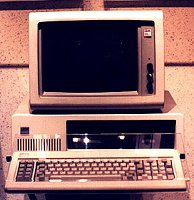|

Back|Next

-Building A PC-
STEP 1 : Materials Required
This tutorial is intended to assist
you in building a basic
PC. There are obviously a
plethora of possible PC configurations and
hardware that you could put into
your new PC if you choose. But, what we are trying to do here is help you
put together a basic PC. For this reason, we are only requiring the basic
components and tools to get you up and running.
Tools Required
- Screwdriver - A Phillips-head (cross-point) screwdriver is what is
used in most PCs.
- Screw Extractor - If you have surgeon's fingers you may not need
this. But, if you're human, it is likely you might drop a screw into
your PC during this procedure and be too big-thumbed to get it out. A
screw extractor can help you grab those screws and get them out without
messing with the hardware. You definitely do not want to run your PC
with loose screws in there. It could cause a short circuit.
- Flashlight - Unless you are in a fantastic lighting situation, you
will likely need a flashlight to get a look of the landscape in your PC
while you're working.
- Tweezers - May be helpful for you in switching jumpers later in the
tutorial.
-
PC Tools Checklist
Hardware Required
- PC Case
- Floppy Disk Drive
- Hard Drive
- CD-ROM Drive
- Processor
- Processor Cooling Fan
- Motherboard
- Memory Modules
- Power Supply
- Video Card
- Keyboard & Mouse
To build a basic PC, you will need at
least a motherboard, a
memory module, a processor with
cooling fan, a power supply, a
hard drive, a floppy drive, a video card and a CD-ROM.
Most electrically sensitive hardware
comes in a static bag which is designed to protect the electronics from
static electricity shock. Leave your hardware in these bags until you are
ready to install them.
Software Required
- System Disk
- Device Drivers (these usually come with the hardware above)
- Operating System (for the purposes of this tutorial, we will assume
you are choosing Microsoft Windows as your operating system – PC
Mechanic has lots of great information on Linux and other alternatives)
Cables and Miscellaneous
- Drive cables
- Motherboard spacers (usually come with the motherboard, but are
used to space the motherboard up off the mounting plate)
- Screws (usually a whole pile of screws will come with your PC's
case, but if you are using a case you happened to have around, you will
need to collect some screws)
- Power cords (for both your PC and your monitor. They usually come
with the hardware when you buy it, of course)
- CPU Cooling Compound
Next

Your Name © 2004 |




